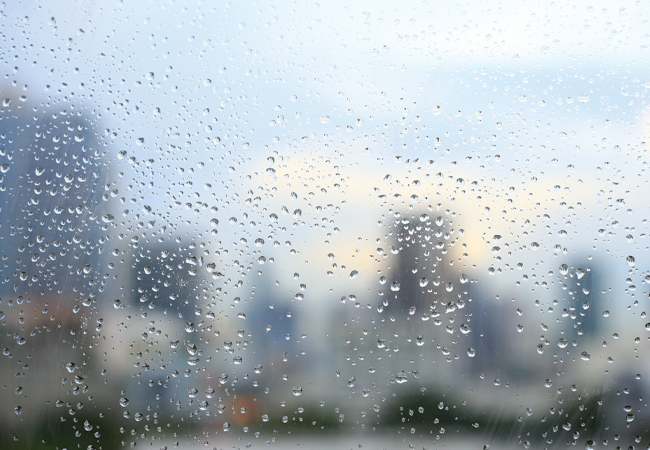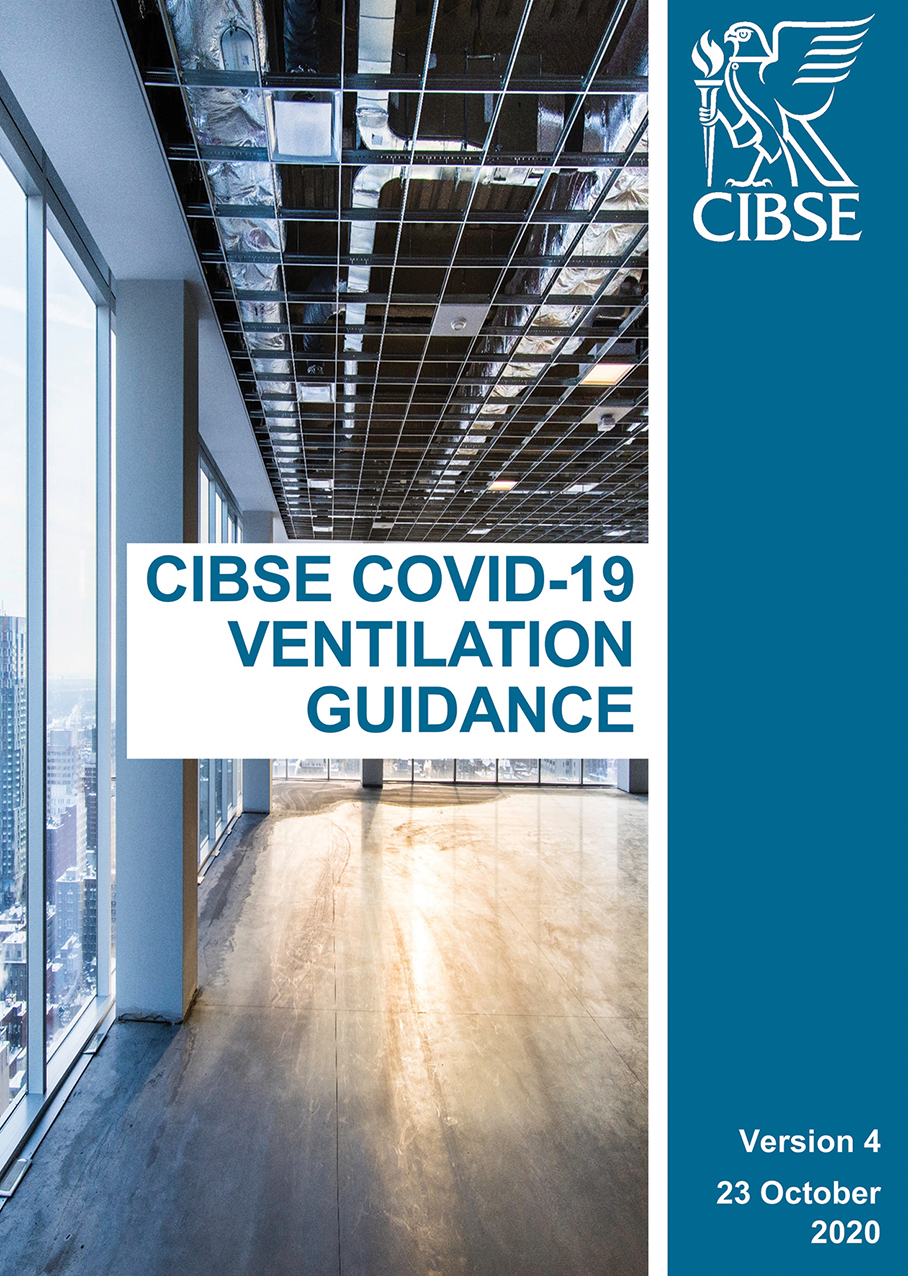
Winter weather will pose a ventilation challenge
At the beginning of the coronavirus pandemic earlier this year, evidence began to emerge of super-spreading events in poorly ventilated indoor spaces that were suggestive of aerosol transmission of the SARS-CoV-2 virus. This led to building services bodies around the globe providing recommendations to improve ventilation.
In April, CIBSE issued a statement acknowledging the potential risk of SARS-CoV-2 being transmitted via the aerosol route and, in early May, released guidance for building owners, operators and those who maintain them, including the CIBSE Covid-19 Ventilation Guidance.
The principle of the guidance was to ensure that as much outside air as reasonably possible was provided to indoor spaces, to dilute any potential airborne, aerosol-encapsulated virus. With the UK entering spring and summer, there was, in many cases, the ability to improve outside air provision by opening more vents and windows, and bypassing recirculation systems to ensure mechanical systems were working on full outside air.
Government Covid-secure guidance has also noted the importance of good indoor ventilation in reducing transmission of the virus, while HSE guidance specifically references the CIBSE Covid ventilation guidance.1 More recently, Public Health England has acknowledged that ‘SARS-CoV-2 is primarily transmitted between people through respiratory (droplet and aerosol) and contact routes… Airborne transmission may also occur in poorly ventilated indoor spaces, particularly if individuals are in the same room together for an extended period of time’.2
Opening of just high-level vents can enable more mixing of the outside air with indoor air, tempering the incoming air before reaching the occupied zone
There has always been an acknowledgement that what is deemed reasonable in the summer may not be reasonable as the weather cools. Evidence has continued to mount to demonstrate that airborne aerosol transmission is most likely in poorly ventilated (and crowded) indoor spaces.
It is also acknowledged that ventilation should be weighed against other factors, particularly thermal comfort and energy use. There is a balance of benefits to be considered when determining what may be reasonable with respect to providing as much outside air as possible.
It will certainly be different depending on the season. If there is too much thermal discomfort for the occupants, there is a risk of a behavioural response to close or block off ventilation provision, which would be a highly undesirable outcome.
The latest version of the CIBSE Covid-19 ventilation guidance explores this further. It emphasises that – at the least – the ventilation strategy should achieve the equivalent minimum provision of outside air ventilation rate for the space over the occupied period, as defined in current standards, and ventilation rates beyond this should ensure thermal comfort is not significantly compromised.
The updated guidance also considers recirculation of exhaust air, advice for modulating natural ventilation openings, the use of CO2 sensors as an indicator of poorly ventilated spaces, and the use of UV air-cleaning systems.
Recirculation
It is preferable not to recirculate air from one space to another. However, in certain weather conditions, closure of the recirculation dampers in some systems can lead to unsatisfactory temperature conditions of the supply air and, consequently, a reduction in the rate of supply of outside air to the occupied spaces to levels below what is deemed adequate (10L·s-1 per person for typical offices – see CIBSE Guide A).
In these instances, there is a balance of risks to be considered with recirculation: the increased risk of cross-contamination between rooms or zones and the reduced risk of contaminant build-up as a result of maintaining adequate levels of provision of outside air. It is recommended that recirculation is used if this is the only way of maintaining adequate levels of outside air to occupied spaces without causing undue occupant thermal discomfort.
Natural ventilation

The latest CIBSE guidance has advice on balancing the provision of outside air with occupant comfort
For naturally ventilated spaces, windows and vents are often the mechanism for providing outside air. It is important to remind building users that operation of windows and other vents should not be binary – fully open or fully closed. Rather, they can be modulated, with partial opening.
During the colder months, the natural forces that drive air through these openings (wind and buoyancy arising from indoor/outdoor temperature differences) are greater, so the openings do not need to be opened as wide. Opening of just high-level vents, rather than low and high-level vents, can enable more mixing of the outside air with indoor air, tempering the incoming air before reaching the occupied zone. This can help enable more outside air to be introduced to the space without impacting too adversely on occupant comfort.
If natural ventilation openings are the only mechanism for delivering outside air into a space, it is important not to close them completely when the spaces are occupied, as this can result in very low ventilation rates and increased risks of airborne viral transmission.
Regenerative rotary air-to-air heat exchangers (enthalpy or thermal wheels)
There is the possibility that viral material could become adsorbed on the surfaces of the wheel and be transferred into the supply airflow, but there is no evidence of this happening, and the risks of such viral transfer are outweighed by the need to ensure high ventilation rates. If, however, adequate ventilation rates with suitable thermal comfort can be provided without use of the regenerative rotary heat exchanger, it is advisable to bypass the system if provision is available – or if no bypass is available then the rotor should be turned off.
The heat recovery function is usually integral to the system design in terms of simultaneously delivering adequate airflow and meeting heating or cooling demand. If the only way to provide adequate and safe outside airflows is by using the enthalpy wheel, it is advisable to turn the rotor on. Not doing so will result in a greater build-up of any indoor viral contaminant. The expected reduction in dilution of any potential indoor viral source with inadequate ventilation flowrates is considered to be a greater risk for viral transmission than the potential for viral transfer across the thermal wheel.
Turning the rotor on will also improve thermal comfort conditions. It has the added benefits of maintaining the energy efficiency of the system and helping to maintain appropriate humidity levels in the building.
Conclusion
Ventilation has always been an important consideration in the design and operation of buildings, and perhaps since the onset of vaccination programmes and antibiotics, the immediate importance of ventilation to health has been overshadowed by energy efficiency.
The current pandemic has sharpened the focus on ventilation and the challenges of balancing the provision of outside air with occupant comfort and energy use. The updated CIBSE Covid-19 Ventilation Guidance provides helpful advice to manage this balance using the ventilation systems currently installed.
References:
